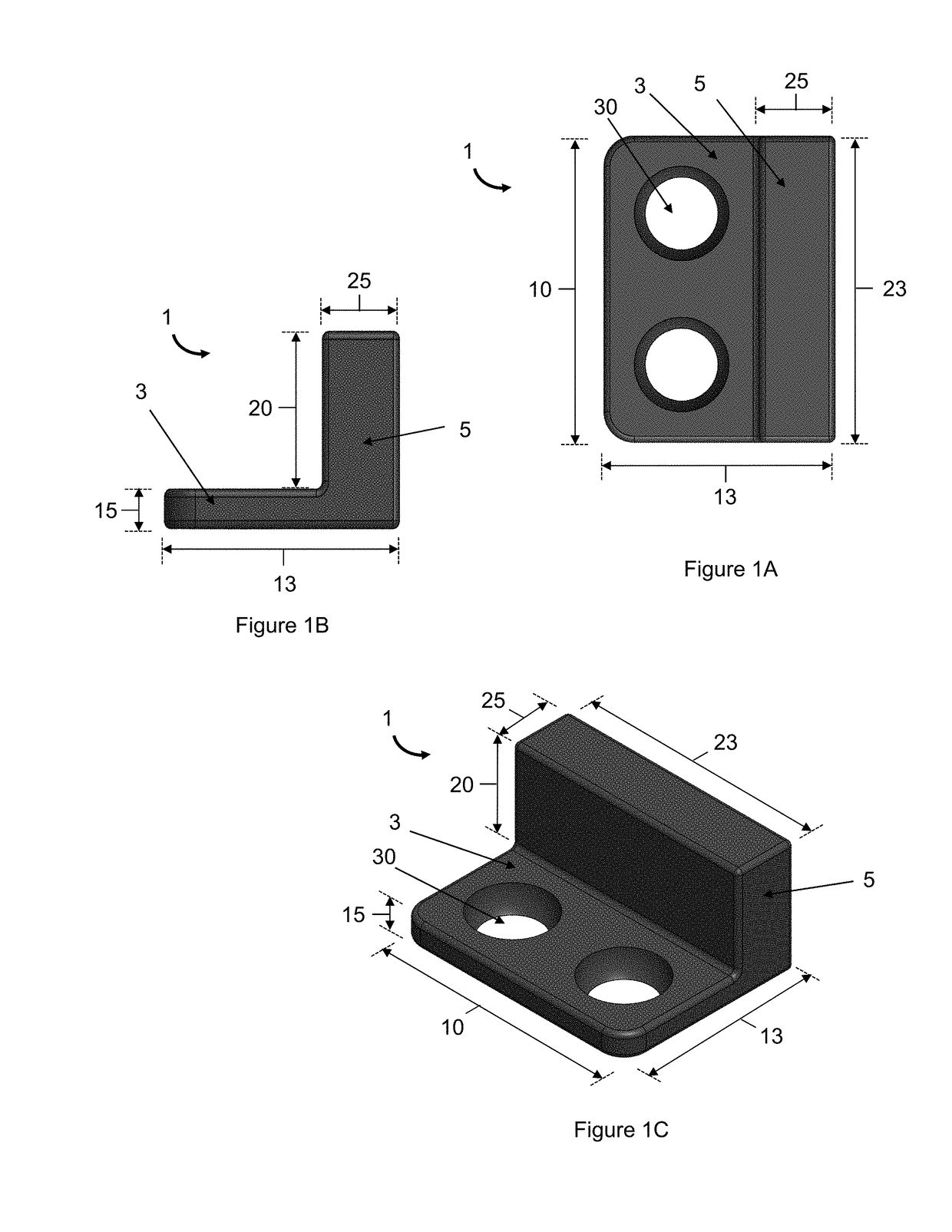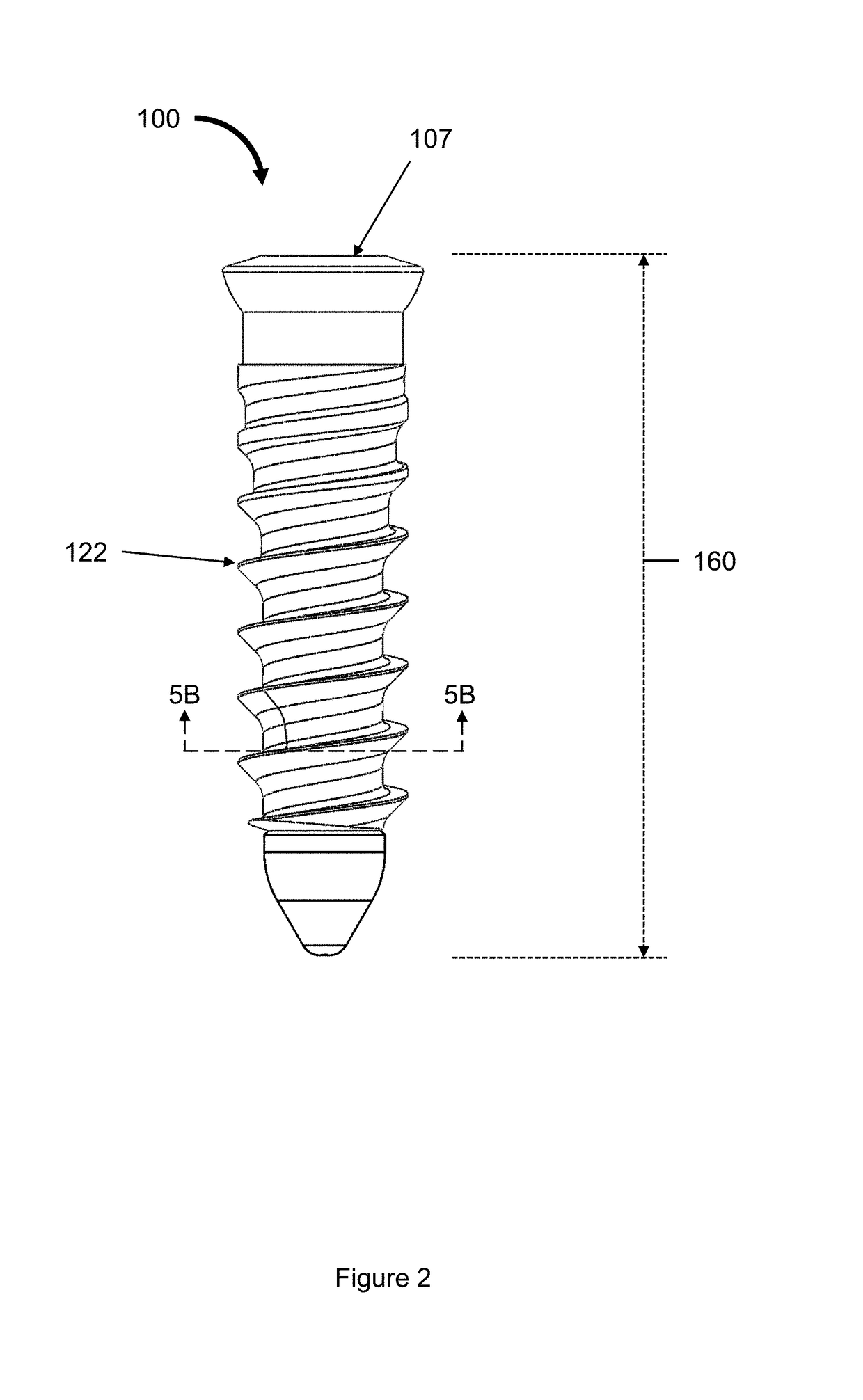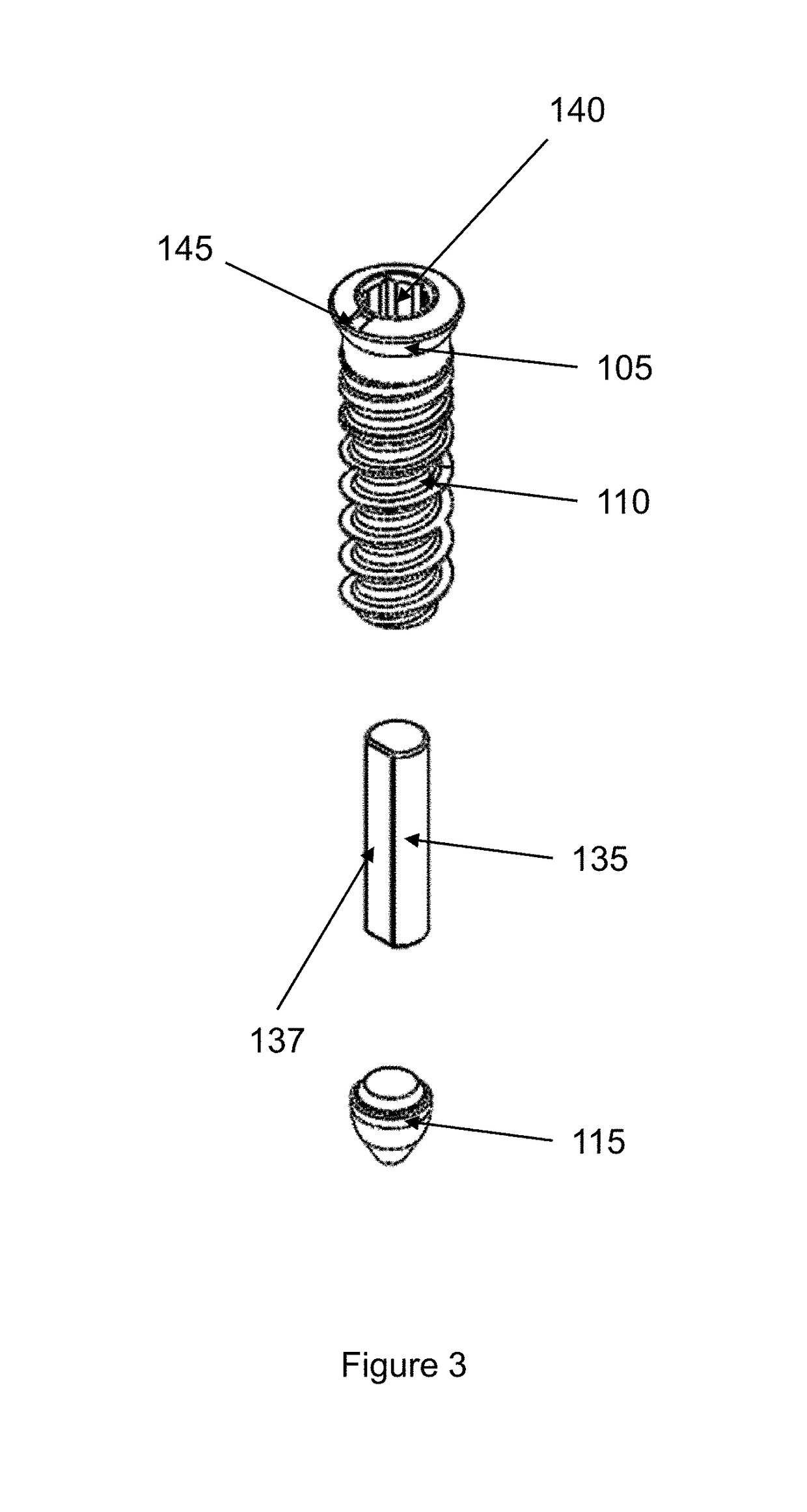Magnetic Devices for Reducing Loading Across Cartilaginous Joints
a technology of cartilaginous joints and magnetic devices, which is applied in the field of magnetic devices for reducing loading across cartilaginous joints, can solve the problems of pain and/or loss of motion, ineffective treatment of such conditions, and long recovery tim
- Summary
- Abstract
- Description
- Claims
- Application Information
AI Technical Summary
Benefits of technology
Problems solved by technology
Method used
Image
Examples
example 1
[0111]Modeling was used to study the impact on repulsion force of the size of the magnetic device, separation distance (distance between the magnetic device(s) in a first bone of the joint and the magnetic device(s) in a second bone of the joint), and the depth of the magnetic device (distance that the magnetic device extends into the bone, in some instances the length of the magnetic device). The magnetic forces were modeled using JMAG®, a simulation technology that utilizes finite element analysis to calculate the magnetic forces and fields.
[0112]Table 1 below provides examples of repulsion forces generated from particular magnetic devices in certain arrangements. These examples show how changing the separation height can impact the repulsion force.
TABLE 1Repulsion forces generated from magnetic device(s) implanted in a first bone and asecond bone of a joint, as determined using modeling.Knee FlexionMagnetSeparationRepulsionMagnetic DevicesAngleDepthHeightForceA cylindrical magnet...
example 2
[0113]A series of finite element analyses were conducted using JMAG to study the magnetic forces that are generated when magnets are used in a cervical traction application. In these studies, four magnets are placed in a configuration depicted in FIGS. 19A and 19B. These magnets are 5 mm in diameter and 20 mm in length. The lower two magnets are 10 mm apart and the upper two magnets are 8 mm apart. The height difference between the upper and lower magnets is varied at 8, 10, and 12 mm.
[0114]The analyses determined the repulsion force that was created by the magnets in this configuration. The axial loads generated when the height difference between the upper and lower magnets is 8 mm, 10 mm, and 12 mm are provided in Tables 2, 3, and 4, respectively. These distances are the minimum axial distances for the example given; therefore, the axial loads that are generated represent the maximum axial forces. Values could be changed depending on the patient, for example, the anatomical dimens...
PUM
 Login to View More
Login to View More Abstract
Description
Claims
Application Information
 Login to View More
Login to View More - R&D
- Intellectual Property
- Life Sciences
- Materials
- Tech Scout
- Unparalleled Data Quality
- Higher Quality Content
- 60% Fewer Hallucinations
Browse by: Latest US Patents, China's latest patents, Technical Efficacy Thesaurus, Application Domain, Technology Topic, Popular Technical Reports.
© 2025 PatSnap. All rights reserved.Legal|Privacy policy|Modern Slavery Act Transparency Statement|Sitemap|About US| Contact US: help@patsnap.com



